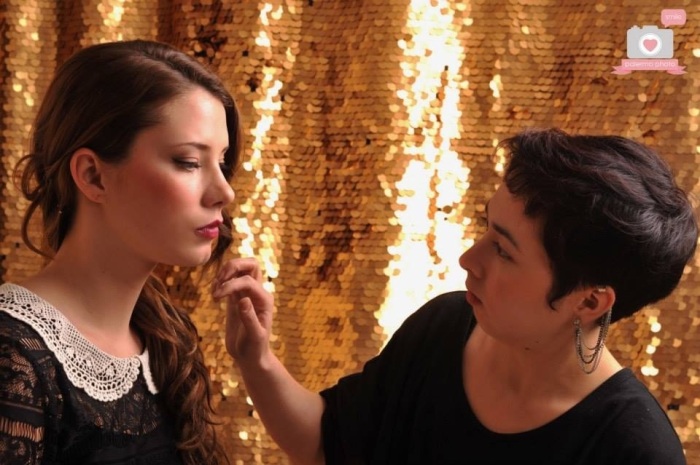Sometimes we try products that we have only heard marvelous things about and we hate them. Sometimes products that work well on others don’t work for us, but before you through away that high end foundation, try putting it on a different way. This is a troubleshooting post for everyone out there that just can’t get their facial products to work for them.
Skincare
People go for power, power, power in their products. But for skin care it is not about power, it is about balance. I see a lot of people that over exfoliate and have issues with redness, and others who under exfoliate and their skin is dry, dull and lifeless. You don’t need salicylic acid in your face wash if you only occasionally breakout, or for one or two pimples. Be kind to your skin! A lot of issues people have with their foundation is due to over or under exfoliating. Healthy skin is always the first step.
Similarly, a lot of people over or under moisturize. Plump skin is all about a healthy balance of oil and water. Drink lots of water and use a moisturizer that is appropriate for your skin. Even people with oily skin should moisturize.
With moisturizer, it is also important to know when to use it. Some will work better at night but might be too slick under makeup. Most are more effective on slightly damp skin, but will be diluted if your face is too wet or won’t soak in if your skin is too dry. If you haven’t exfoliated, the roughed up surface skin can keep the moisturizer from penetrating your skin.
Foundation
There are so many ways to apply foundation. Before returning or throwing out a nice foundation, always experiment with application. Some foundations can appear too heavy if you use too much. Dotting the foundation onto your forehead, nose and a few dots on your cheeks can be enough and then blend. A lot of people only need foundation on certain parts of their face, so on some people I just focus around eyes, on cheeks and over nose then blend outward. Sometimes blending with your hands can push the product around without much control, in which case a brush or sponge my work better. A makeup sponge will give maximum coverage. Always tap the product on rather than wiping. On some people a brush will cause microexfoliation (flaking).
Also, know whether a foundation needs a primer. Most are designed to work best with a primer these days, but through reviews and research you can sometimes see how necessary it is. Sometimes moisturizer and primer under foundation is just too much. Also, not all primers are equal. So a primer that works well with one foundation might not work with another. They can literally separate like oil and water.
If your foundation is oxidizing (turning orange over the course of the day) sometimes primer or setting powder will help. Some just do and if so, toss it.
Concealer
As I said before with primer, when you mix brands sometimes products don’t sit well together. For example a water based foundation and an oil based concealer might separate, so watch out. Some concealers are better for the undereye area and others are more focused on blemishes and dark spots. Always think about your goal for your concealer, as some will be heavier with more of a makeup feel.
A good brush can make all the difference with concealer. A good rule of thumb is to have the brush be a similar size to what you are trying to conceal, so a tiny brush for pimples and a more small/medium size one for undereyes. Make sure you aren’t getting reverse circles by painting too far outside the lines, especially if you out concealer on after foundation.
Make sure not to use too much, as it can cause flaking or creasing, make sure the undertone is right. I know some people recommend two shades lighter but that isn’t necessarily what you want, depending on your skill set and intention.
A lot of creamier concealers work better if they are first warmed on the back of your hand.
Dabbing concealer with a sponge or tissue after application can help keep it from moving, but removing excess oil.
Powder
Not all powders are the same. Some can be made to have as much coverage of a foundation, others are merely for setting. Also know that some you can use a lot and others must be used sparingly. Also remember that some foundations are meant to set without powder.
Some powders can be used alone or to set foundation, in which case the brush is very important. To get coverage out of a powder foundation you want an extremely dense brush. I have a small mineral brush from Sephora that looks kinda like a little kabuki brush with a long handle. I love it and I can get so much coverage. It is very soft and I can just buff and buff and with my Smashbox powder, it looks like skin. Sometimes I use my powder to set instead or to add just a touch more coverage and I use a fluffy powder brush. With setting, be careful not to wipe the foundation around, use a soft, dabbing motion and a light hand. Sometimes dabbing foundation and concealer with a tissue first will help remove excess oil before powder to prevent clumpy looking powder.
Eyeshadow, Brow Products, Liner
Experiment with primer and brushes if your eyeshadow isn’t “working.” For brows, experiment with brushes. Even if it is more of a pencil type product, you will probably want to smudge it with a brush. Most eyeliners will have better staying power if you set them with black or brown (or whatever) eyeshadow after applying. Some look better when smudged with a brush.
40.378094
-80.041167







